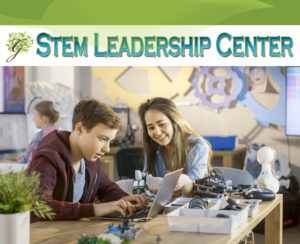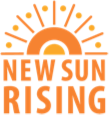 Preparing our kids for the 21st century involves exciting them about STEM education and making sure they are literate in science, technology, engineering and math. Many are asking that we put an “A” for the Arts into STEM education, making STEAM education the focus of 21st century learning.
Preparing our kids for the 21st century involves exciting them about STEM education and making sure they are literate in science, technology, engineering and math. Many are asking that we put an “A” for the Arts into STEM education, making STEAM education the focus of 21st century learning.
That begs the question – does that mean that scientists, technologists, engineers and mathmeticians need to learn design, beauty, and music? Steve Jobs made Apple a success focusing on design. Dan Pink, in his book A Whole New Mind: Why Right-Brainers Will Rule the Future, tells us that design is key to thriving in a future that belongs to a different kind of person with a different kind of mind: artists, inventors, storytellers-creative and holistic “right-brain” thinkers. Garr Reynolds,in Presentation Zen: Simple Ideas on Presentation Design and Delivery demonstrates how to seamlessly integrate design concepts into our something as mundane as a PowerPoint. This approach looks at STEM education still in terms of silos of education. It asks that students interested in technology, gifted in math and science, the students often labeled as geeks, that those students will benefit from classes in calligraphy, design, piano, and dance.
Or does putting the A in STEM mean that all students, even those in the arts, are meant to be immersed in this century’s needed STEM literacy? Are they learning the skills to use social media to connect with thousands, like Eric Whitaker in conducting a virtual choir, or the skills to story board, compose, enact and edit a light saber battle between with cello bows, or the skills to create a revoluntionary peer-to-peer music file sharing program like Shawn Fanning and Sean Parker, the co-founders of Napster?
Careers and Education Programs in the above Info-graphic are a mash-up of STEM and Music, some thought provoking pictures of a future that folds together electronics, acoustical engineering, psychology, neuroscience, computer programming, and architecture with music.
A popular approach to physics was introduced several years ago at a music and STEM conference. It involves teaching an entire class the physics of pitch, frequency and resonance by building a guitar. A lesson plan can be found at Engineering Go For It site. The National Science Federation sponsors the STEM Guitar Project which provides innovative professional development to high school and community college faculty. Ruth Catchen recently posted a great museum shot of a guitar exhibit with STEM lessons and the Carnegie Science Center of Pittsburgh has announced GUITAR: The Instrument That Rocked The World, the touring exhibition of The National GUITAR Museum, from June 16 through Sept. 30 that will include some STEM concepts.
The 21st century is bringing so many wonderful opportunities. Each, being new, requires a can do attitude that means we’re willing to learn new things and try new technology, master more than one talent and collaborate with others to mash together new expressions of beauty, mourn and celebrate the music composed and performed in the past and boldly lead music in new directions that builds a more just and beautiful world.




3 comments
Thanks Ellen for the shout out and the focus on STEAM. It helps for people to understand that one should support the arts for the art’s sake and as well, support integrating them into STEM curriculum to better understanding through a variety of experience. I think this change will take a shift in administration for public education from the test what you know to show what you can do or have learned, or perhaps re-conceive the idea of test! Students will excel when they learn academics through their interests. Along with John Maeda at RISD, the MIT media Lab and Daniel Pink, this year The Aspen Ideas festival had several related lectures, so it means to me that people wil begin to listen.
Author
Ruth – Great link to the Aspen Ideas Festival http://www.aspenideas.org/content/2012-aspen-ideas-new-videos . I’ve checked out some of the speakers. What a great line up!
Yes, ART is starting to depend on math. Lucas’ Industrial Light and Magic and Pixar are all about the solutions of differential equations of motion and 4-D rendering. There is some good animation software called Maya. This used to be the software that Pixar and Industrial Light and Magic ran. It does some very sophisticated math in the background. I think you can get a free demo copy.